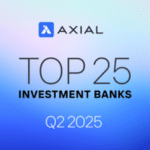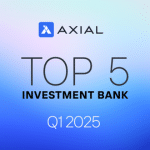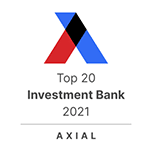
The Easiest Method for Choosing a Restaurant Franchise
V = ROI
It is easy to understand the allure of restaurant franchising. As a large and growing segment of the overall restaurant industry, restaurant franchising is attractive for its consistent, proven track record of returning cashflow. Restaurant owners can benefit from expanding their concept at a rapid pace, and entrepreneurs can enjoy the opportunity to own and operate their own businesses with the support and resources of an established brand. While the restaurant franchise industry can be highly lucrative for both franchisors and franchisees, it is also highly competitive with a wide assortment of potential concepts. Prospective franchisees should carefully research their options and consider their budget, skills, and interests before investing in a franchise. Successful franchisees typically have a combination of business acumen, operational experience, and a passion for the industry.
I live in a state where franchisors are required to register their franchise offering documents, and there are currently more than 450 registered restaurant franchises. If you are interested in opening a franchised restaurant, how do you pick one out of 450? First, pick a food category where you have the greatest passion – coffee, pizza, ice cream, hot fried chicken, poke bowls, etc. My next suggestion is to pick one of the franchises in that category with the highest average sales. The reasoning is simple – higher sales typically means higher profit. Hence the equation V = ROI which of course stands for: Volume = high Return on Investment.
ROI consists of two components: Investment and Return. Investment is important but the return is the secret sauce. If your concept can generate substantial cash flow (i.e., return), the ROI is likely very high, and the key to generating high cash flow is volume. Here’s an example of a typical restaurant:
- $1 million total investment,
- $1 million average annual sales,
- 65% variable costs (food, royalties, team labor),
- 20% fixed costs (rent, managers salary, utilities, etc.), and
- 15% profit.
In my example above, sales are $1 million a year with a 15% profit so you generate $150,000 a year in cash flow. With a $1 million investment, that’s a 15% return on your investment. The key is what happens as sales increase. You earn another 15% profit – right? No, it’s much better than that. You have 65% variable costs so for every additional dollar in sales, 35 cents go to the bottom line. For example, if sales increase to $1.2 million, the profit increases by $70,000 and the ROI jumps from 15% to 22%. That’s a 47% increase in your cash flow on 20% higher sales. Have a really hot chain with $2.0 million in average sales? The profits jump to $500,000, an ROI of 50%.
Of course, achieving a high average sales volume isn’t easy. It takes a good concept, a great location, a well-trained staff in a difficult hiring environment, and executing day after day. But if you choose the right concept, the cash flow should come.
Jim Sowers, a FOCUS Managing Director located in Richmond, Virginia, has over 30 years of experience in investment banking and corporate finance. He specializes in the Food & Beverage industry. Interested in learning more? Please contact Jim Sowers, at [email protected].














